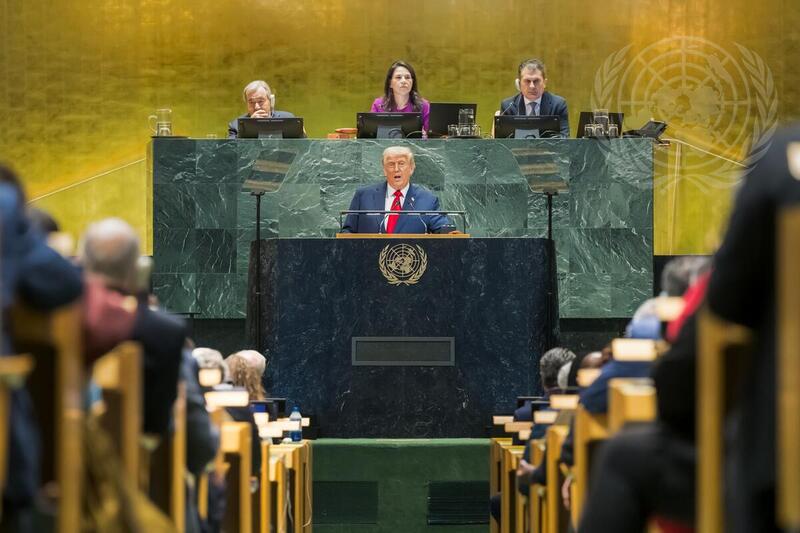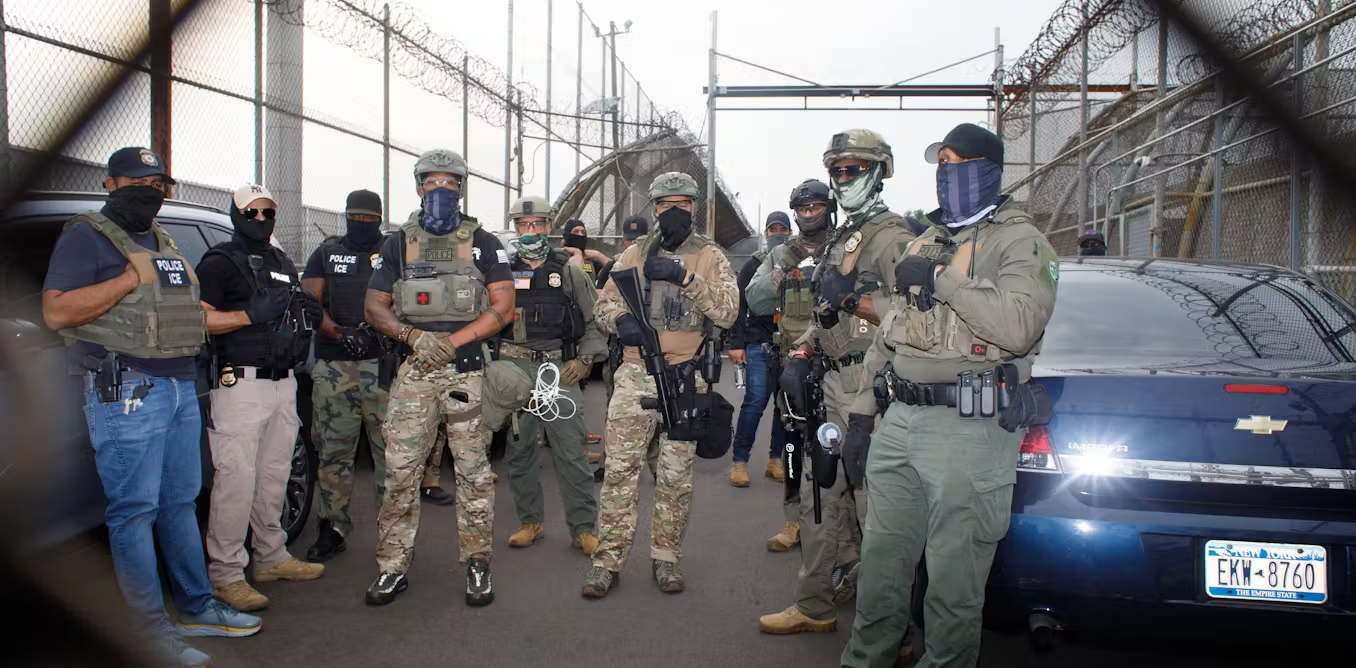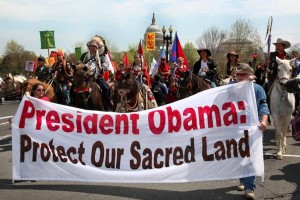
Civil society’s opposition to the proposal for the nearly 2,000-km, $10-billion private tar-sands crude transport project catapulted the issue into the hottest political spot on U.S. President Barack Obama’s environmental radar screen.
The White House touted its Nov. 6 denial of the controversial Keystone XL tar-sands crude-oil pipeline application as proof of a new U.S. policy committed to global leadership in climate change action. More precisely, however, the Administration’s rejection of the foreign corporate land-grab and money-making scheme was proof of the effectiveness of grassroots resistance.
Civil society’s adamant and sustained opposition to the Canadian TransCanada Corp.’s proposal for the nearly 2,000-km, $10-billion private tar-sands crude transport project to span the entire midsection of the United States, from the mines of Alberta Province in Canada to the export havens on the Gulf of Mexico, catapulted the issue into the hottest political spot on U.S. President Barack Obama’s environmental radar screen.
The Presidential response to the activism capped a seven-year struggle led by indigenous rights defenders, farmers and ranchers in a movement that transcended conventional cultural boundaries between the cowboys and Indians of the rural Great Northern Plains region. Tribal leaders dubbed non-Indian allies the “New Indians” in the fight, as TransCanada Corp. threatened to exercise the doctrine of eminent domain to grab their private property.
Siding with the heartlanders, climate activists and environmental justice proponents worldwide measured their strength against a bloc of extreme-energy advocates in the fossil-fuel industry, their minions in the U.S. Congress, and the waning Administration of former Canadian Prime Minister Stephen Harper.
Despite brazen lobbying by Harper and several shameless attempts by Congress to force POTUS into approving the boondoggle, Obama tipped his hand to the pipeline opponents by announcing months ahead of his decision that the Presidential Permit would be granted on the basis of the project’s climate impacts, specifically its contribution to the greenhouse gas proliferation blamed for global warming.
The State Department found in its Supplemental Environmental Impact Statement for the project that the Canadian tar-sands are “more greenhouse-gas-intensive than the other heavy crudes they would replace or displace in U.S. refineries, and emit an estimated 17 percent more GHGs on a life-cycle basis than the average barrel of crude oil refined in the United States.”
Therefore, it noted, “If the proposed project were to induce growth in the rate of extraction in the oil sands, then it could cause GHG emissions greater than just its direct emissions.”
Its direct emissions annually would be equivalent to those from approximately 626,000 passenger vehicles operating for one year or 398,000 homes using electricity for one year.
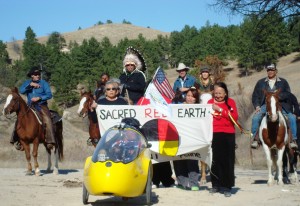
Activist actress Daryl Hannah joined clean energy advocate Tom Weiss as Native Americans on horseback escorted them through the Pine Ridge Indian Reservation on his bicycle Ride for Renewables, which covered the entire length of the pipeline path.
If no pipelines were constructed, the anticipated decrease in tar-sands production would amount to a reduction in greenhouse gases in the range of 0.35 to 5.3 million metric tons of CO2-equivalent annually, according to the statement.
With that in mind, on the eve of 2015 international climate talks in Paris, Obama declared, “America is now a global leader when it comes to taking serious action to fight climate change. And frankly, approving this project would have undercut that global leadership.”
The United States still has a long way to go to become anything like a global leader, if it wants to set any examples of climate action. It is one the “Dirty Dozen” countries with the highest rates of CO2 emissions per capita in the world. Claiming less than a twentieth of the planet’s population, the United States produces an eighth of the global emissions of greenhouse gases.
Yet Obama’s Administration has made some strides toward becoming a team player in the arena of climate change negotiations. His Keystone XL Pipeline decision makes him the first U.S. President to reject a fossil fuel project based on a climate-change argument.
Moreover, the pipeline action speaks louder than words as a positive response to demands of the historically overlooked communities in the sparsely populated 1868 Ft. Laramie Treaty territory overlapping the pipeline’s northern target states of Montana, South Dakota and Nebraska.
“Grassroots groups have been the boots and moccasins on the ground in this fight,” rejoined Dakota Rural Action member Paul Seamans, whose ranchland could have been condemned for the pipeline route, even though the project was not for a public utility.
In his response thanking Obama, Seamans vowed: “Never again will a company such as TransCanada so seriously underestimate the power of grassroots opposition.” He called for “the celebrations” to begin.
His non-profit conservation group is part of the No KXL Dakota coalition of tribal, treaty rights, and other local leaders, allied to defend air, land, water, food, health and culture from the pipeline.
Faith Spotted Eagle, a coalition member and spokesperson for the traditional governing body of the Ihanktowan Treaty Council, noted: “This is what unity, hard work and breaking down barriers looks like… all for protecting sacred water and land for the generations.”
____________________________________________________
“Never again will a company such as TransCanada so seriously underestimate the power of grassroots opposition.” Paul Seamans, Dakota rancher and pipeline opponent
____________________________________________________
Not only did the allied front stop the so-called “Black Snake”, but it also produced another very big take-away, she said. “We stood united in this struggle, Democrat, Republican, native, cowboy, rancher, landowners, casino urban warriors, grandmas and grandpas, children… and through this fight against KXL we have come to see each other in a new, better, stronger way.”
The motivating factor for the organizers was that the project benefits did not outweigh the risks. They would get most of the pain and little of the gain.
The several thousand promised yearlong skilled construction jobs on the pipeline would give rise to transient man-camps, reputed for promoting sex trafficking. Employment would then fizzle to a total of only 35 permanent positions, according to the impact statement.
The Canadian product would be refined in Port Arthur and other Texas towns already subject to more than their share of refinery pollution, in nbso online casino reviews flagrant abuse of environmental justice tenets. From there, it would be shipped overseas, providing no cost relief or energy security for domestic consumers.
The previously built TransCanada Corp. Keystone 1 tar-sands crude line through the same region had at least 14 spills in its first 12 months of operation. Its revenue payout to local governments was far less than pledged. Landholders are responsible for damage from spills on property they lease to pipelines.
The new line would have crisscrossed systems that carry potable water from the Missouri River to rural areas all the way across western South Dakota. It also would have crossed tributaries to the Missouri.
It would have run just above the shallow Ogallala (or High Plains) Aquifer, one of the world’s largest underground water tables, providing nearly all the supply for domestic, industrial and all-important agricultural use in an eight-state region. Previous tar-sands pipeline spills demonstrated their pollution is more difficult to remediate than conventional crude spills.
It would have added insult to injury, since the Great Plains territory controlled by tribal governments had already been reduced in size a number of times in recent decades, violating treaties and the federal trust relationship with tribes, while reducing indigenous autonomous practices in the area along the proposed route.
Non-Violence Organizing to Stop the Pipeline
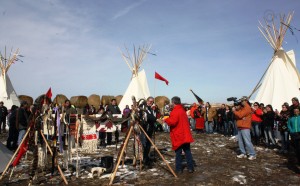
In Rosebud Sioux tribal jurisdiction, tribal government officials and activists established one of several spirit camps, erecting seven teepees on the pipeline route to represent the Seven Council Fires of the Great Sioux Nation united in warding off the Black Snake through prayer.
Among the arsenal of peaceful weapons used to fight the pipeline were prayer vigils, sacred fires, water blessings, letters, testimony at public hearings, petitions, rallies, marches, protest demonstrations, flash mobs, song and dance, costumes, concerts, films, billboards, fliers, t-shirts, caravans, hunger strikes, civil disobedience, letters to editors, treetop and teepee encampments, bicycle tours, horseback pack trips, graphic art, walk-outs, and lawsuits.
Media coverage of opposition, stifled initially by TransCanada Corp.’s purchase of big flashy advertisements, first began in the Native American press in Lakota Territory. It then caught the eyes of national and international editors, and eventually began appearing as the top story in most news outlets.
Once the organizations and tribal governments of the “Fly-Over Zone” (so-called because residents traveling between the more heavily populated East and West coasts of the United States often see the region only from the air) had built up enough momentum with their campaign, they were joined by an astounding list of small foundations, social media forums, petition sites, and heavy-hitting big green groups.
This faction became crucial in buoying up the struggle, providing the monetary muscle necessary to raise the heartland demands to high profile on Capitol Hill. Traditional spiritual rites and daring campaign activities became sources of pride for participants.
On the southern reaches of the pipeline construction in Oklahoma, dissidents perched in trees along the route to prevent crews from clearing it. Other protesters chained themselves to heavy equipment meant to build the line and burrowed into empty pipe lengths.
In Nebraska, farm-crisis relief champions and musicians Willie Nelson and Neil Young headlined a benefit concert called Harvest of Hope. Bold Nebraska and other members of the Cowboy Indian Alliance worked with artist John Quigley to create the world’s largest crop-installation in a field on the pretended route.

An allied front of cowboys, Indians, and climate justice advocates stopped the so-called “Black Snake”.
In South Dakota, activist actress Daryl Hannah joined clean energy advocate Tom Weiss as Native Americans on horseback escorted them through the Pine Ridge Indian Reservation on his bicycle Ride for Renewables, which covered the entire length of the pipeline path.
In Rosebud Sioux tribal jurisdiction, activists established one of several spirit camps, erecting seven teepees on the pipeline route to represent the Seven Council Fires of the Great Sioux Nation united in warding off the “Black Snake” through prayer.
Civil disobedience actions included stopping trucks headed for the oilfields and escorting them off the Indian reservations for lack of authorization. Opponents also demonstrated on the White House Lawn and turning the National Mall in Washington, D.C. into a teepee encampment, replete with horses.
When the fight was all over, May Boeve, executive director of the climate action group 350.org, proclaimed, “Just a few years ago, insiders and experts wrote us off and assured the world Keystone XL would be built by the end of 2011.
“Together, ranchers, tribal nations and everyday people beat this project back, reminding the world that Big Oil isn’t invincible,” she said. “More than anything, though, today’s decision affirms the power of social movements to enact political change.”
____________________________________________________
“Together, ranchers, tribal nations and everyday people beat this project back, reminding the world that Big Oil isn’t invincible.” May Boeve, Climate action group 350.org
____________________________________________________
The audacity of these seemingly strange bedfellows kept the federal government from falling for the ploys of a foreign firm that tried to dictate policy to all three branches of the republic, as well as to the Fourth Estate, for nigh onto a decade.
Now, in order to maintain the momentum, hold the line on climate change, and build cross-boundary solidarity, they still have to face-down numerous other tar-sands pipeline proposals in North America.
Talli Nauman, United States, is a U.S.-based journalist who has worked with the Americas Program for nearly two decades. She writes on environmental issues.
Photos by Talli Nauman, Aldo Seoane, No KXL Dakota and Shield the People


